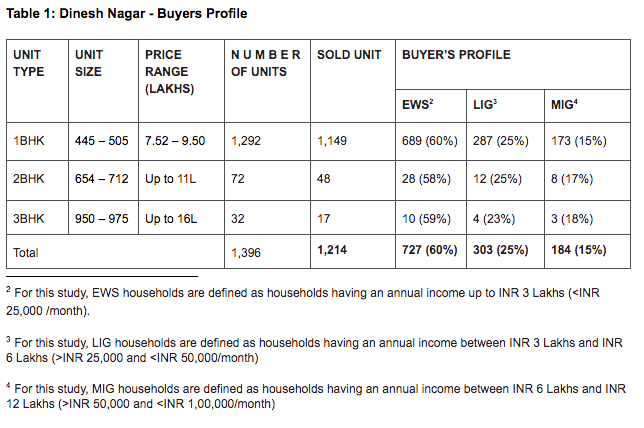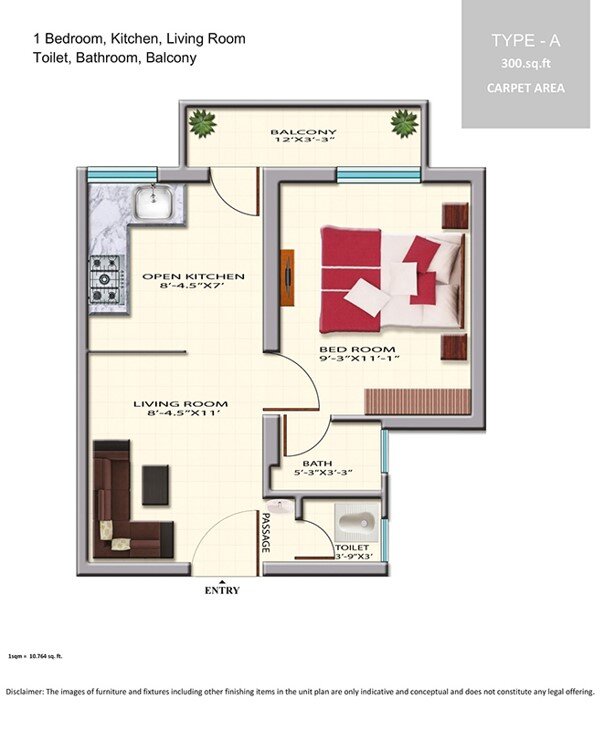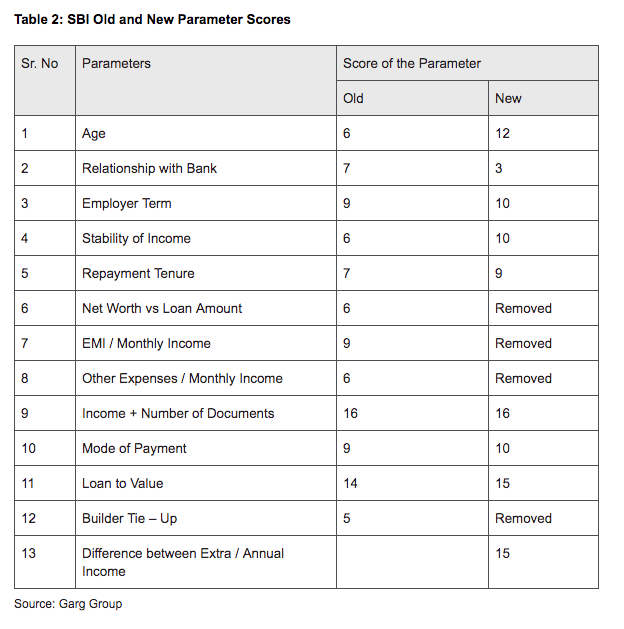Project Name: Dinesh Nagar
Location: Pilkhuwa (Hapur District), Uttar Pradesh
Developer: Platina Real Estates Pvt. Ltd (Garg Group)
ABOUT
Garg Group is a diversified company founded in Ghaziabad in 1957. The company has been involved in real estate market with multiple registered entities. LandCraft Developers Pvt. Ltd is one of the primary real estate development concerns of the company. While LandCraft focuses on middle-income group (MIG) and high-income group (HIG) segments, Platina Real Estates Pvt. Ltd, a sister company of Garg Group entered the affordable housing market with its pilot project ‘Dinesh Nagar’ launched in November 2010 to serve the base of the pyramid. Garg group observed that there is an opportunity in the affordable housing sector because not many developers were constructing for this income segment. Additionally, they believe that profits can be made through affordable housing projects too.
Figure 1 : Timeline of Garg group affordable housing projects
Location and Connectivity:
The site is located on the north-eastern side of Ghaziabad city near Pilkhuwa town in Hapur district. The project falls under the purview of HPDA - Hapur Pilkhuwa Development Authority. Spread over 18 acres of land, it delivers houses in two phases. Geographically, the site is 11 km from Hapur city in Uttar Pradesh, 26 km from Ghaziabad and 53 km from New Delhi.
The project site is close to Delhi – Hapur road (refer Figure 2), which connects Dinesh Nagar to Ghaziabad. The site is connected by state transport buses and the nearest bus stop at Pilkhuwa is 1.5 km away. The railway line connecting Pilkhuwa to Ghaziabad is 2.5 km from the site. Buses and trains are available at a distance of 1 km from the site, hence public transportation is not an issue for residents, especially with e-rickshaws providing last mile connectivity. Also, the Shaheed Sthal New Bus Adda Metro station is at 29 km and Vaishali Metro station is at 38 km, while the New Delhi Indira Gandhi International Airport is around 60–75 km away from the project location. There is an elevated expressway on NH 24 that will significantly improve the connectivity of the location from Delhi NCR. Frequency of state transport buses is very low, but increases from Pilakhuwa.
The industrial areas in the vicinity include a Mother Dairy factory, warehouses, fabrication industries, manufacturing units (small to medium) and furniture factories. Although the largest employment centre is in Ghaziabad, many residents also work at factories and industries in Noida. These major nodes are more than an hour away from the project site (by private vehicle).
Figure 2: Location Map of Dinesh Nagar; Major Nodes in Regional Context
Figures 3 and 4: Dinesh Nagar
Source: Primary Survey
Targeted Customers, Demand and Supply:
Garg group entered the affordable housing market with the Dinesh Nagar project. In six years (2010-16), the 900 units of phase I are sold out. Dinesh Nagar homes are occupied by people from various income groups, predominantly from the economically weaker section (EWS) and lower-income group (LIG). Approximately 53% of the buyers are from the EWS category, 22% from LIG and the remaining 25% from MIG. With its success, Garg Group has launched two more projects under the LandCraft banner (Refer Figure 1).
Most residents of Dinesh Nagar have stable jobs in the formal sector, and are employed in the nearby sugar mills, engineering colleges, and other manufacturing units around Hapur and Pilkhuwa. From retirees to newly-weds and mid-career professionals, the place has attracted a diverse population.
Access to Basic Services:
Currently groundwater is being tapped for potable supply, and this creates issues during dry months. Construction of the rainwater harvesting system has been completed recently and it is operational. Power backup has not been supplied and frequent outages are an issue for residents. In terms of basic amenities, there is a lack of street lights on the main road that connects the site to Pilkhuwa.
Although the developer had plans to incorporate schools and sports facilities within the campus, none of these have been implemented yet. A commercial complex comprising of spaces for shops has been constructed and is operational.
The project claims to have 18 parks and gardens that serve as play areas and more for the resident children. However, these open spaces are relatively small and may not be able to adequately serve the families that reside in the two or three buildings that surround one space. However, the ratio of green spaces in relation to total built up area is on the higher side in the country in the affordable housing segment, as the developer believes.
Design and Construction:
In total, the project offers 1,396 units built in 46 blocks designed as G+3. There are 1, 2 and 3 BHK apartments (Refer Table 1) available at Dinesh Nagar and it also has 132 residential plots which are yet to be developed. Overall, approximately 42% of the total project area is being used for housing.
As can be observed in Figure 5, the design of the 1BHK unit has been done by optimizing the available floor space. The bedroom and kitchen are well ventilated. The bathroom and toilet have been provided separately and ventilation for these have been provided through a duct. A balcony has also been provided for residents to dry clothes in. Since the Type B and C plans do not vary significantly from the Type A, only one plan has been shown and discussed here.
Access to Social Infrastructure:
The absence of a commercial complex had led to the residents establishing shops in various spaces within the residential units. However, the commercial space has now been constructed in two buildings with 31 shops, and all activities have been shifted here. While the school within the campus is yet to be constructed, there are multiple schools and higher education facilities within the Hapur-Pilkhuwa region. The same holds true for the health and related medical facilities.
Access to Housing Finance Institutions:
Finance for the project was handled by SBI, PNB, BOB, HFFC and Shubham Housing Finance. The houses are priced between INR 8,10,000 – 16,00,000.
SBI played a major role in providing housing loans to the targeted segment for the Dinesh Nagar project. A special camp was conducted in July 2011 for extending loans to more than 50 applicants who intended to buy houses in Dinesh Nagar. Although SBI has certain scoring parameters to screen applicants for loan feasibility, the parameters were tweaked to suit customers from the bottom of the pyramid. As highlighted in Table 2, parameters 6, 7, 8 and 12 were completely removed as these were found to be irrelevant for lower income segments. Similarly, parameters like relationship with the bank were given a lower weightage, while income stability, repayment tenure, mode of payment and loan to value ratio were given more priority to enable more end users to procure housing loans. Additionally, this framework was made flexible by granting power to branch managers who could evaluate the applications on a case to case basis. The idea was to make the framework more subjective while reducing the importance of scoring norms. This initiative was taken up by the developer who then roped in SBI proactively to innovate on its evaluation framework. Consequently, SBI was the main housing finance partner for Dinesh Nagar with 65% of the total loans from Dinesh Nagar being sanctioned through SBI.
Post Occupancy Operations and Maintenance:
The project is currently being maintained by workers on contracts assigned by Garg group. Residents are charged a maintenance fee of INR 380 per month. The developer plans to hand over maintenance of Dinesh Nagar to the RWA once construction is completed and all houses are handed over.
Social Marketing:
The marketing team at Garg Group consciously targeted the workforce in the employment hubs. Workers from factories and warehouses in the vicinity were targeted and events were conducted at the Ram Leela ground, school grounds, mills and factories to market the project.
Notes :
Land Craft company is the real estate vertical of the Group working since 2006 for higher income group. Golf Links (A Golf centric township), River Heights (Group Housing project) and The Center Court are some of its previous projects catering exclusively to the HIG segment. Although, more recently under the Samajwadi Awas Yojna of the Government of Uttar Pradesh, Land Craft Developers has launched two affordable housing projects: LandCraft Metro Homes located on the main NH-58, Ghaziabad and New Saket located in Meerut (ref Figure 7). ‘Both these projects are offering housing units between INR 15,00,000 – 30,00,000’. (source: http://landcraftmetrohomes.com/)
For this study, EWS households are defined as households having an annual income up to INR 3 Lakhs (<INR 25,000 /month)
For this study, LIG households are defined as households having an annual income between INR 3 Lakhs and INR 6 Lakhs (>INR 25,000 and <INR 50,000/month)
For this study, MIG households are defined as households having an annual income between INR 6 Lakhs and INR 12 Lakhs (>INR 50,000 and <INR 1,00,000/month)
-----------------------
This case study is an extract from a report titled “Affordable Housing For All: Challenges, Opportunities, and Way Forward” (2018), authored and published by the Indian Housing Federation (IHF) with the generous support of the Tata Trust. The report is a culmination of a study in which we study and document eight developer-led housing projects across Pune and Mumbai in Maharashtra, Ahmedabad in Gujarat and Ghaziabad in Uttar Pradesh.







